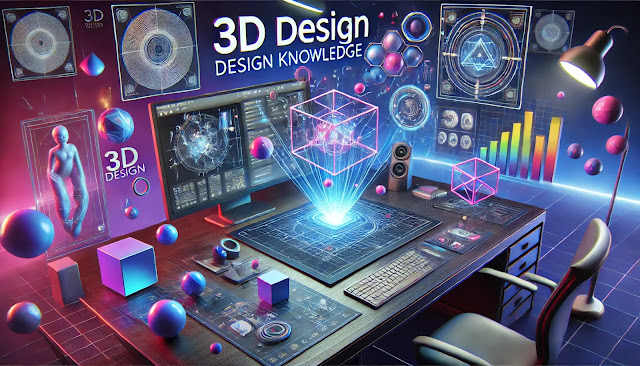In recent years, 3D design has revolutionized the creative industry, transforming everything from branding and advertising to web design and product development. As technology advances, 3D visuals are becoming more accessible and widely used, making it crucial for designers to understand how to incorporate them into their work effectively.
Why 3D Design is Gaining Popularity
The rise of 3D design is driven by several key factors:
Enhanced Visual Appeal: 3D graphics offer depth, realism, and dynamic motion, making designs more engaging.
Technological Advancements: Software like Blender, Cinema 4D, and Adobe Substance 3D have made 3D design more accessible to both beginners and professionals.
Better User Experience: In UI/UX design, 3D elements provide a more immersive and interactive experience.
Brand Differentiation: Companies use 3D design to create distinctive branding elements that stand out from competitors.
How to Incorporate 3D Design into Your Work
1. Start with Small Elements
If you’re new to 3D design, begin by incorporating simple 3D objects into your projects. This could be as subtle as 3D icons, buttons, or typography in your designs. Adding these elements can instantly give a modern and sophisticated touch.
2. Utilize 3D for Branding and Marketing
Businesses are increasingly using 3D visuals in advertising, product showcases, and brand storytelling. For example, 3D-rendered product images and animations provide a more detailed and lifelike representation than traditional photography.
3. Enhance Website and UI/UX Design
Web design is evolving with 3D elements such as interactive animations, floating objects, and depth effects. Integrating 3D into UI/UX design improves engagement and offers a more immersive user experience.
4. Leverage 3D in Social Media Content
Social media is a competitive space, and 3D content can help you stand out. Whether through animated posts, AR filters, or eye-catching 3D graphics, these elements capture attention and enhance engagement.
5. Experiment with AR and VR
Augmented Reality (AR) and Virtual Reality (VR) are redefining digital experiences. Many brands are integrating 3D models into AR applications to allow users to visualize products in real life before purchasing.
Tools to Get Started with 3D Design
If you’re ready to dive into 3D design, here are some popular tools to explore:
Blender (Free, Open Source) – Ideal for modeling, animation, and rendering.
Cinema 4D – Known for its intuitive interface and powerful rendering capabilities.
Adobe Substance 3D – Excellent for texturing and material creation.
SketchUp – A beginner-friendly tool for architectural and product design.
Future of 3D Design
As technology continues to evolve, 3D design will become even more integrated into everyday digital experiences. With AI-powered tools and real-time rendering engines improving efficiency, the barriers to entry will decrease, making 3D design a must-have skill for modern creatives.
Final Thoughts
3D design is no longer a niche skill but a powerful tool that enhances visual communication across industries. Whether you are a graphic designer, marketer, or web developer, incorporating 3D elements into your work can help elevate your projects, engage audiences, and stay ahead of the competition. Start small, experiment with different tools, and gradually integrate 3D into your workflow to unlock new creative possibilities.

Comments
Post a Comment